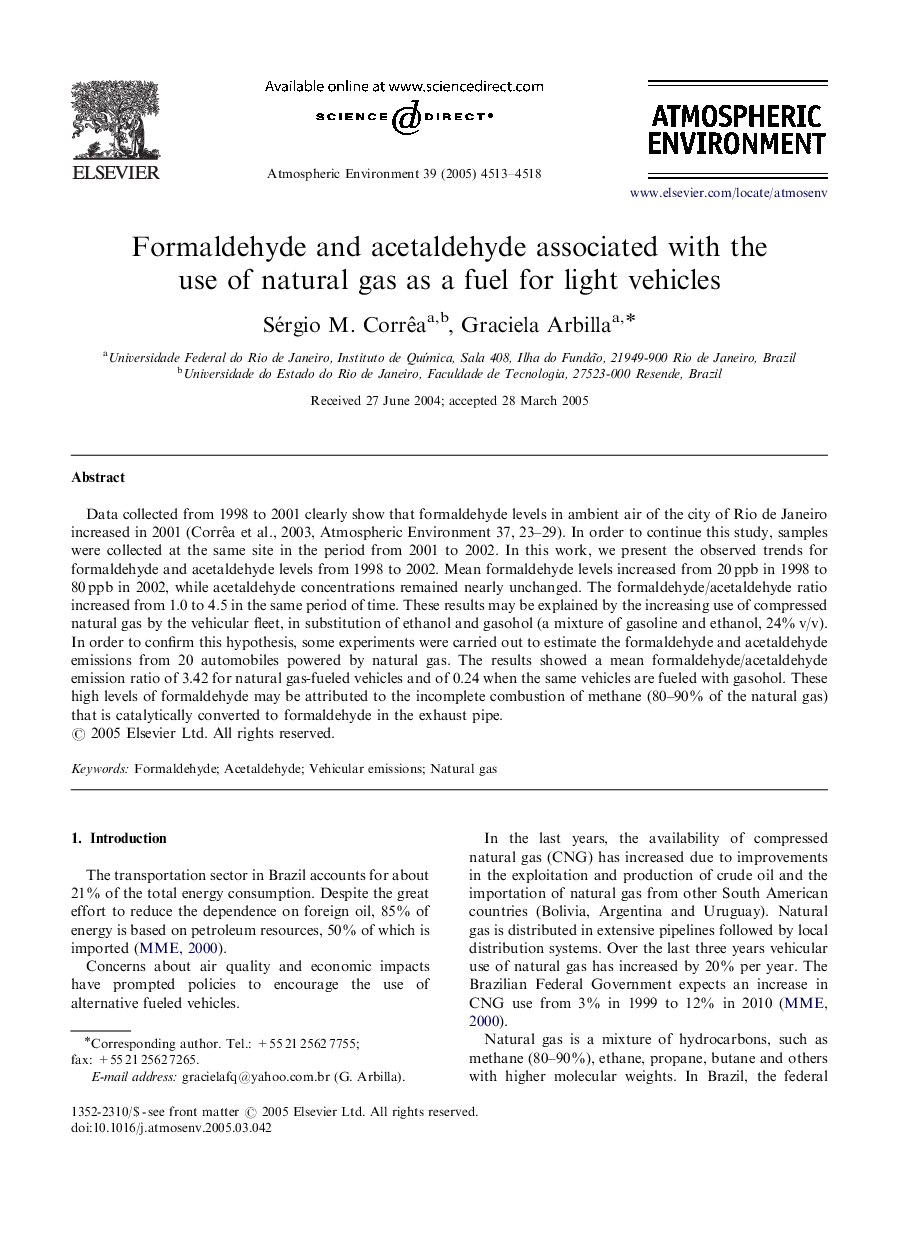| Article ID | Journal | Published Year | Pages | File Type |
|---|---|---|---|---|
| 4445224 | Atmospheric Environment | 2005 | 6 Pages |
Data collected from 1998 to 2001 clearly show that formaldehyde levels in ambient air of the city of Rio de Janeiro increased in 2001 (Corrêa et al., 2003, Atmospheric Environment 37, 23–29). In order to continue this study, samples were collected at the same site in the period from 2001 to 2002. In this work, we present the observed trends for formaldehyde and acetaldehyde levels from 1998 to 2002. Mean formaldehyde levels increased from 20 ppb in 1998 to 80 ppb in 2002, while acetaldehyde concentrations remained nearly unchanged. The formaldehyde/acetaldehyde ratio increased from 1.0 to 4.5 in the same period of time. These results may be explained by the increasing use of compressed natural gas by the vehicular fleet, in substitution of ethanol and gasohol (a mixture of gasoline and ethanol, 24% v/v). In order to confirm this hypothesis, some experiments were carried out to estimate the formaldehyde and acetaldehyde emissions from 20 automobiles powered by natural gas. The results showed a mean formaldehyde/acetaldehyde emission ratio of 3.42 for natural gas-fueled vehicles and of 0.24 when the same vehicles are fueled with gasohol. These high levels of formaldehyde may be attributed to the incomplete combustion of methane (80–90% of the natural gas) that is catalytically converted to formaldehyde in the exhaust pipe.
